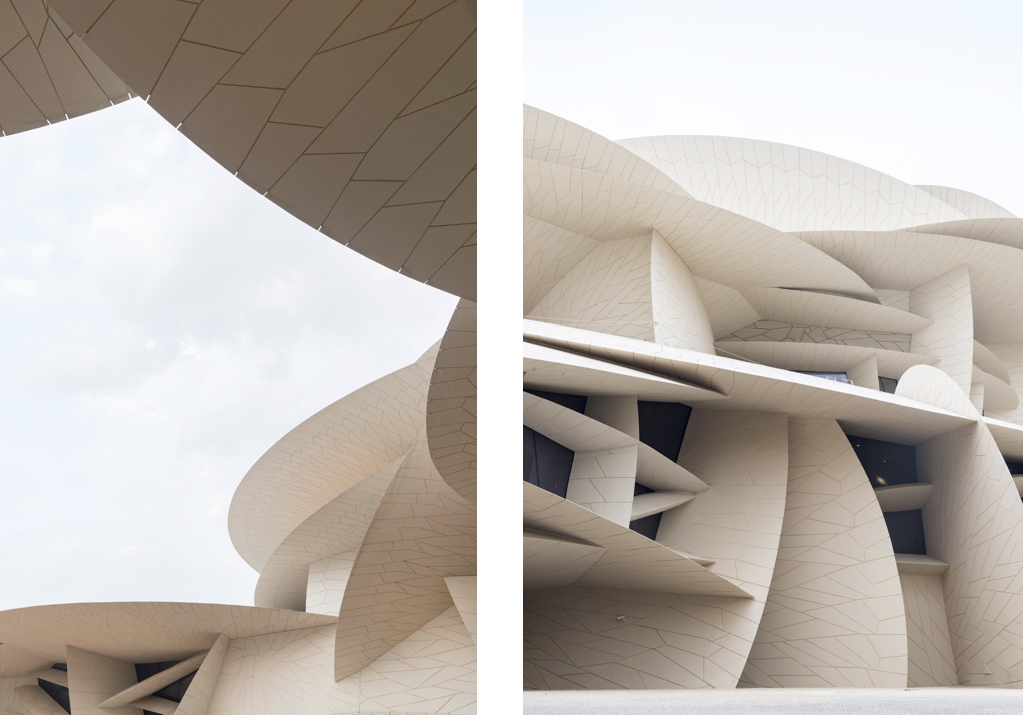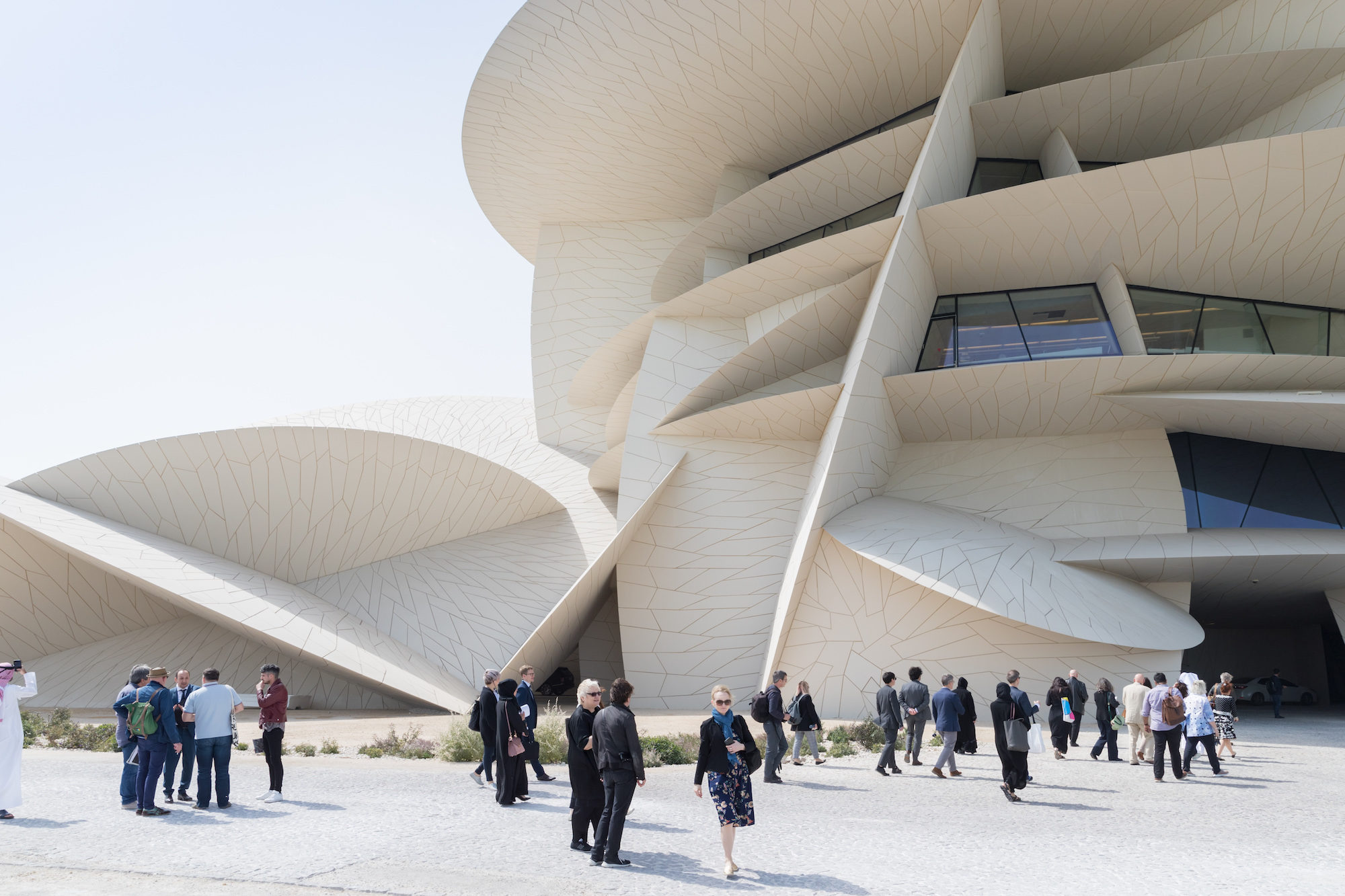The Middle East’s latest architectural marvel has arrived. Located at the southern end of the Doha Corniche waterfront promenade, the National Museum of Qatar is a love letter to the desert—particularly the crystallized, bladelike petals of the desert rose represented by the structure’s low-lying, interlocking pavilions, clad in 76,000 faceted panels of fiber-reinforced concrete. Thank Jean Nouvel, the Pritzker Prize–winning French architect who just two years ago inaugurated the Louvre Abu Dhabi across the Persian Gulf, in the United Arab Emirates.
His latest feat took 18 years to complete, has a price tag north of $400 million, and features over a mile of gallery space, adding yet another cultural blockbuster to the Middle East’s expanding portfolio. The building’s cantilevered disks, which provide natural shade, helped the museum become the first to receive both LEED Gold certification and a four-star sustainability rating from the Global Sustainability Assessment System.
The collection’s artifacts range from the pre-human settlement era to today, and include such heritage objects as the Pearl Carpet of Baroda, which was embroidered with more than 1.5 million Gulf pearls in 1865. Visitors can explore similar wonders from Qatar’s 700-million-year history, archaeology, and present-day culture across eleven galleries, which culminate in the museum’s grand centerpiece. Headlining the permanent exhibition is the Emir of Qatar Sheikh Abdullah bin Jassim Al Thani’s original palace—one of Doha’s most recognizable landmarks—which underwent a sweeping restoration in 2014 by Berlin-based firm Ziegert Roswag Seiler Architekten Ingenieure.
Outside, site-specific artworks abound. A Simone Fattal sculpture, which draws inspiration from by the ancient petroglyphs found at Al Jassasiya, takes pride of place on the entrance walkway. In the garden’s 3,000-foot-long lagoon, artist Jean-Michel Othoniel conceived his largest installation to date: ALFA, a series of 114 black fountains which feature calligraphy-inspired streams that activate once per hour.
Nouvel seems to have found a fan base in the Middle East. Next up: Saudi Arabia’s Al Ula, a massive mixed-use development inside the Al Sharhan Nature Reserve that will include a restoration of the Arabian leopard’s habitat, and is set to finish in 2023.



